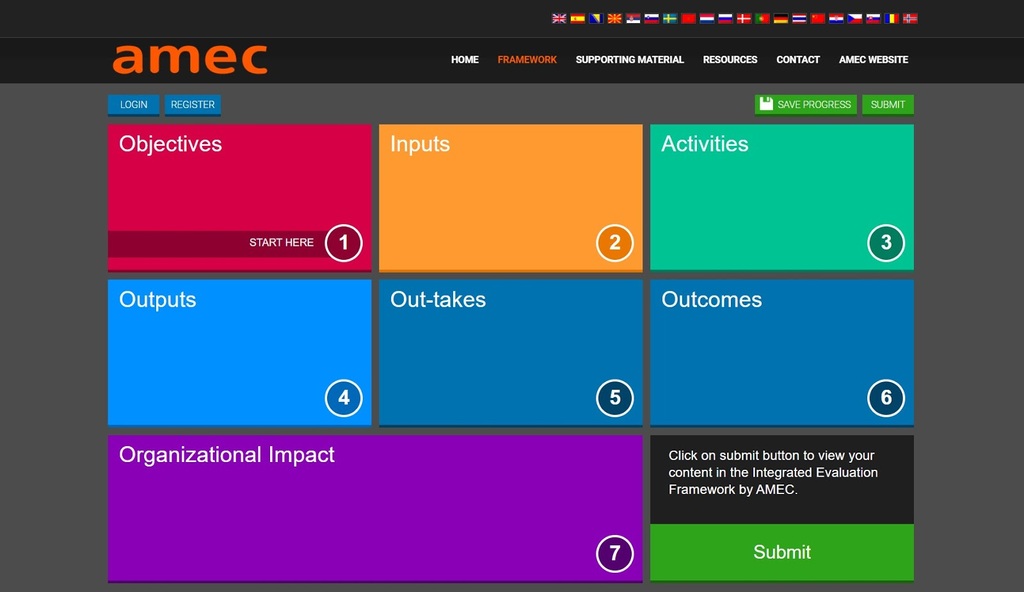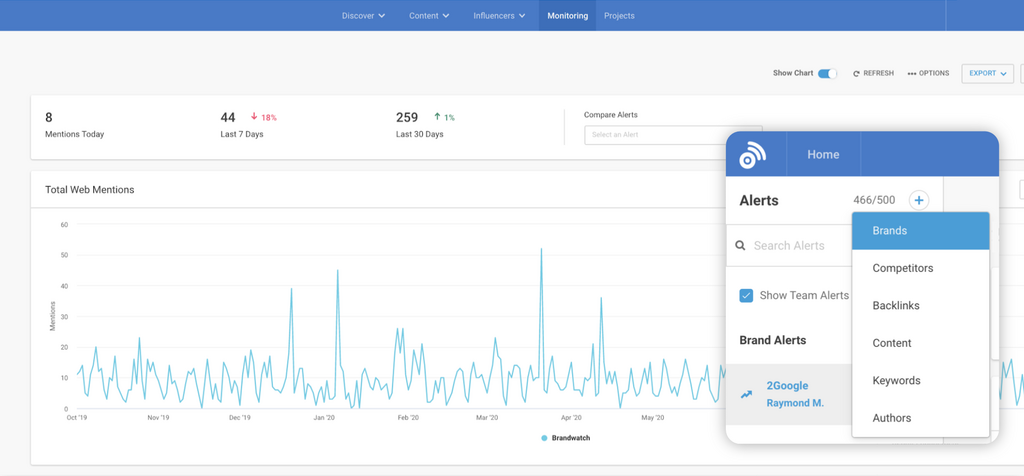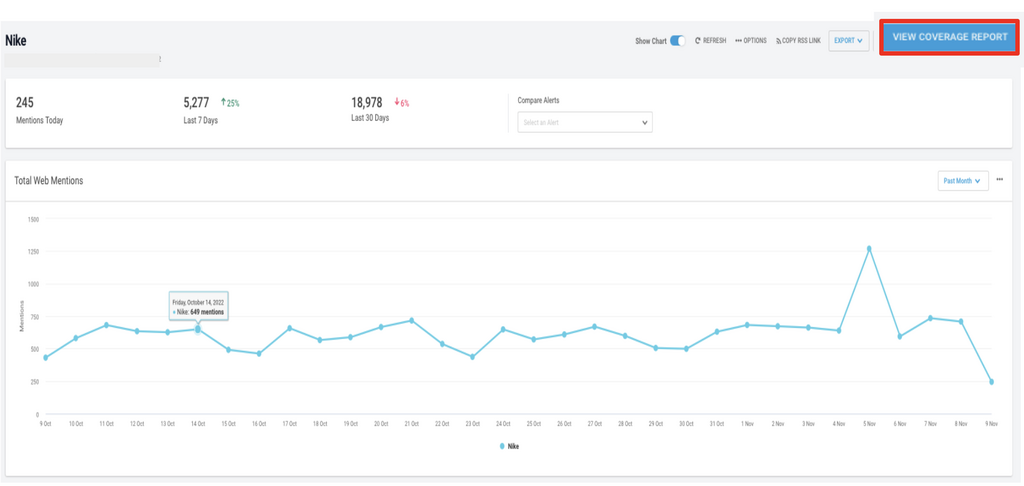Updated January 10th 2023
How To Measure PR: The Definitive Guide
The PR industry has traditionally been lousy at measuring the value of its work. That’s all changing, with the introduction of robust frameworks, tools, and greater access to data.
This article started life as a discussion on Twitter about which monitoring vendors provided outdated and legacy PR metrics as part of their product or service.
It turned out that there’s a lot still to do.
The thread caught the attention of the BuzzSumo team, and they asked me to write a best practice guide about how to measure PR. Here it is.
Contents
The Importance of Measuring PR
- Why should you measure PR?
- When should you be measuring PR?
- The history of measuring PR
- Outdated PR Metrics: AVE
- AVE denounced as a PR metric
- Industry best practice on how to measure PR
Building a Modern PR Measurement Framework
Forecasting and Planning with PR Data
- How to plan with PR data
- What data should you use to plan and measure PR?
- How do you use social data to measure PR?
Essential PR Metrics to be Monitoring
The Importance of Measuring PR
Measuring the value of your work and contribution to an organization is critical to receiving proper remuneration and investment.
In marketing and PR that means demonstrating the impact in terms of outcomes that are aligned to the business.
The closer that you can tie the value you deliver to the objectives of the organization the more you’ll be valued.
The dividend will pay out in budget and salary. It’s common sense.
Francis Ingham is among a group of individuals within the PR industry that have dedicated significant professional energy to improving PR measurement.
“The PR industry’s focus on measurement and analytics is helping to improve its value and reputation. It is enabling us to recruit and retain talent. The use of dinosaur metrics continues to decline,” said Francis Ingham, Director General, PRCA and CEO, ICCO.
Why should you measure PR?
Measuring helps you to define the success of your PR activities.
Best practice PR measurement should start and end with an organizational plan.
This informs the objectives and metrics of communication and PR activity, as well as the audience, content, and desired outcome of activity – whether that be:
- Changing behavior
- Education
- Influencing opinion, or
- Sales
When should you be measuring PR?
Measurement should be used as a continuous process throughout the lifecycle of a campaign.
It’s a performance tool for real time campaign management.
The history of measuring PR
The PR industry has traditionally simplified PR measurement to a single metric.
The advertising value of the media coverage generated by activity has been used as a proxy for value.
This reductionist approach has its origins in the marketing team, as a means of benchmarking earned media and paid media.
Simplifying PR activity to a single metric is plainly wrong. It makes no sense as a means of measuring communication or organizational success.
Outdated PR Metrics: AVE
Advertising Equivalent Value (AVE) refers to the advertising cost of editorial coverage, and is used as a means of determining the value of editorial media coverage.
It continues to be the scourge of the PR industry, and has a stranglehold because it’s so simple – but it’s far from the best example of how to measure PR.
AVE denounced as a PR metric
AMEC has set out a manifesto denouncing AVE in its call on the PR business to professionalise. It includes the comparison of earned and paid media.
“While the trend for the use of AVE continues to be downward, in some regions AVE is still far too prevalent, with the oft repeated excuse that it is being produced ‘because the client demands it.” Richard Bagnall, AMEC
There’s ongoing debate within the PR sector about banning AVEs.
The CIPR and PRCA give zero marks for measurement in awards submissions if they are used but still AVE has a tight grip on the industry.
Many media monitoring vendors continue to provide data.
Industry best practice on how to measure PR
There is no standard metric for PR but there is a common framework that can be applied to PR planning and measurement.
It’s an approach built by the International Association of Measurement and Evaluation of Communication (AMEC), and it encompasses all forms of integrated media (or PESO) for short:
- Paid
- Earned
- Shared
- Owned
The Integrated Measurement Framework was initially launched in 2017. It is a comprehensive website of resources and an interactive tool. It sets out a best practice approach to PR measurement that can be used for any PR activity or campaign.
The Integrated Measurement Framework is a genuine breakthrough in the measurement of PR activity.
It was based on a set of principles defined at an AMEC meeting in Barcelona in 2010 under the leadership of Dr David Rockland.
The principles have evolved to reflect the evolution of practice and media.
The Barcelona Principles 3.0 announced in 2019 set out seven general guidelines for best practice for how to measure PR.
- Setting goals is an absolute prerequisite to communications planning, measurement, and evaluation
- Measurement and evaluation should identify outputs, outcomes, and potential impact
- Outcomes and impact should be identified for stakeholders, society, and the organization
- Communication measurement and evaluation should include both qualitative and quantitative analysis
- Advertising Value Equivalent (AVE) is not the value of communication
- Holistic communication measurement and evaluation includes all relevant online and offline channels
- Communication measurement and evaluation are rooted in integrity and transparency to drive learning and insights
How do you measure PR?
You can measure PR by analyzing your campaigns out-takes and outcomes, according to the Association for Measurement and Evaluation of Communication. An out-take is the numerical metric(s) you use to gauge success (eg. # of content engagements, # of social conversations, # of branded searches), and the outcome is the overall impact of the campaign (eg. awareness, behavioral change). And to measure all of this, you need a real-time monitoring platform.
The entire process of building a PR campaign involves seven steps, and should be closely tied to organizational objectives.
These steps include:
| 1 | Objectives | PR measurement should start with clear organizational and communication objectives. |
| 2 | Inputs | Define the target audiences of the campaign and other inputs such as situation analysis, resource and budgets. |
| 3 | Activities | Activities, testing or research, content production, and all forms of media. |
| 4 | Outputs | This is quantitative and qualitative measures of outputs across all forms of media. |
| 5 | Out-takes | Response and reaction of your target audiences. |
| 6 | Outcomes | Impact of communications on the target audience. |
| 7 | Organizational Impact | Evaluation of impact against objectives. |
Forecasting and Planning with PR Data
The increased focus on measurement in the PR industry is also raising the stakes on the use of data in PR planning.
It’s a natural complement to measurement and improves the effectiveness of every aspect of a campaign.
Notably it is used as an input to inform the development of strategy and activities.
Free sources of data for PR planning and measurement:
How to plan with PR data
Planning starts by understanding the audience or public that a campaign seeks to engage as part of a communication effort.
This includes understanding the characteristics, behaviour, and motivation of an audience.
Both qualitative research such as surveys, and quantitative research such as social analytics are useful sources of insight.
What data should you use to plan and measure PR?
Every interaction that we have on the web leaves a footprint. These data points can be used for planning and measurement.
There’s a huge amount of data that’s accessible for free or low cost.
Ad planning data is published by platforms such as Facebook and Google and there’s a growing third-party market of search and social tools vendors.
How do you use social data to measure PR?
Social data can be used to inform campaigns, but also to create benchmarks that can be used as a PR metric as part of a campaign plan.
Tools such as BuzzSumo Monitoring enable you to take learnings from the outcomes of past PR activities, and inform strategy around similar activities in the future.
You can explore mention trends pertaining to articles, competitors, keywords, brands, content or backlinks, and build your learning into future PR campaigns.
Reporting on the coverage generated by your PR efforts becomes even easier by using the Coverage Report in BuzzSumo. Within the Monitoring section you can create a report that shows the total mentions generated around your chosen terms.
The Coverage Report tracks all of your mentions, and shows you the total monthly mentions. This is a great way to track the increased coverage attributable to your PR efforts.
Exporting the Coverage Report gives you additional insights to help you assess the quality of these mentions, how much the publication has been engaged with, and the publication’s information. This can become a valuable resource for campaign reporting and future campaign planning.
Essential PR Metrics to be Monitoring
Outputs, out-takes and outcomes are frequently confused, and incorrectly used as key performance indicators and as the basis of calculating return on investment.
Proceed with caution if you want to avoid a flawed approach to PR metrics.
Outputs are a measure of organizational activity. They’re easy to measure as a unit of work by an agency or organization.
Out-takes are the results of outputs. They are often used incorrectly as a proxy for outcomes.
Measurement should be based on outcomes that can be measured directly against organizational objectives.
PR Metrics: Out-takes
- Article: Press coverage is an easy PR metric to calculate using media or social media monitoring. It has value when benchmarked as a form of share of voice
- Attendance or footfall: Delegates or visitors attending an event or visiting a location are an out-take of an event and location based marketing
- Branded search: Any marketing activity used to promote a brand such as advertising or PR will typically result in an increase in branded search
- Conversation: Engagement on social media platforms such as Facebook, Instagram and LinkedIn are a measure of interest in a brand
- Download: Commonly used as a campaign metric in business-to-business marketing to determine interest in an issue or topic as a result of marketing or PR activities
- Dwell time: Interest in a brand or issue can be determined from the length of time that a visitor spends on a website
- Email open and click through rates: Engagement in email marketing is measured through open and click through rates
- Followers: Used in social media marketing to determine the popularity of a brand or organization. As a standalone it is a vanity metric but it has value as a comparative benchmark
- Hits or views: Traffic to a website proves interest in a product, service, or topics. It is used in social and web marketing
- In-bound links: links are a virtual signal of validation from a third party in a website. They are a key metric for SEO PR
- Like: Like followers, likes are a vanity social media metric. They can be useful as a means of performance measurement and to benchmark the success of a campaign
- Reach: A marketing and PR metric that is often used to measure the success of a brand campaign. It has little value to niche audiences
- Referral traffic: Traffic from third party websites is a useful metric for determining the success of affiliate, SEO PR or paid media campaigns
- Reviews: Third party endorsement such as reviews are a means of nurture that help an organization convert leads to sales
- Share of voice: This is a traditional metric used to benchmark and measure marketing and PR success against competitors in a category
- Sharing volume: This is arguably the most valuable social media metric, alongside engagement and traffic, as a means of measuring the reaction and reach of content
PR metrics: Outcomes
- Attitudinal change: The impact of a campaign often used in behavioural change or political campaigning, typically measured by polling
- Awareness: Increase in brand profile or preference from a brand marketing campaign, measured through polling or surveys
- Behavioural change: An observed metric that measures the action or response to a marketing or PR activity
- Conversion: The effectiveness of the handoff between sales and marketing is measured by the number of leads that convert to sales
- Internal: A variety of metrics are used to measure the engagement of an internal audience including recommendation, retention, and productivity
- Recommendation and referral: Net Promoter Score (NPS) has shifted from customer retention to other forms of marketing and PR to measure the willingness of a customer to recommend a brand
- Retention: Customers contribute greater revenue and profit to an organization over time, making retention a key metric where this is a priority
- Revenue and sales: The hard numbers of business performance and success that should be the ultimate metric of any sales-led PR or marketing activity
- Satisfaction: Related to recommendation and referral, satisfied customers are most likely to give a positive NPS score
- Votes: The outcome of a political campaign and the fundamental basis of measurement in politics
Lynn PR is a strategic communications agency that uses a behavioral science approach. It conducts behavioural diagnostics to better understand what specific actions are needed to drive change, and what barriers exist within audiences that might stop them from taking action.
A campaign for NHS South East London Clinical Commissioning Group sought to raise awareness of mental health support services during the COVID-19 lockdown in the UK. It delivered 4.5x improvement in engagement compared with typical benchmarks, crucially reaching diverse and seldom-heard audiences.
“We use a variety of PR metrics appropriate to an activity or campaign. An out-take for a public health campaign is likely to be engagement with owned content. An outcome would be the use of a service.” Shayoni Lynn, Founder and Principal Consultant, Lynn PR
Shift to Real Time Monitoring and Performance
Building a robust approach to planning and measurement leaves no uncertainty of the metrics of success or failure.
It shifts measurement from a retrospective activity to real time management and PR marketing tool that can be used to monitor the effectiveness of activity.
The growing professionalism of planning and measurement in PR has been accompanied by a corresponding development in technology.
Social media and social media tools enable out-takes and outcomes to be monitored in real time.
Alongside internal organizational data, this enables campaigns to be adjusted while they’re live.
Progressive agencies communication teams are using platforms such as Google Analytics and Microsoft Power BI for real time campaign management and PR reporting to stakeholders.
My thanks to the BuzzSumo team for asking me to write this article. It’s great to see tool vendors actively promote best practice and not promote lazy or legacy metrics.
PR measurement should start and end with organizational metrics. Measure outcomes not outputs.
To better measure the out-takes and outcomes of your PR activity, why not give BuzzSumo a go? It’s free to all users for the first 30 days.
Planning your next PR campaign?
Read our guides:
7 Best Practice PR Tips For Your Next Campaign
4 Agency PR Tactics That I Avoid At All Costs
A 2 Step Process For Coming Up With PR Campaign Ideas
8 Unconventional Ways To Land Press Coverage
And don't miss our study of 600K journalist profiles, and find out how to create a compelling PR pitch.
About the author
Stephen Waddington is a professional advisor to PR agencies, Visiting Professor in Practice at Newcastle University and the author of several books on marketing and public relations. He is also the Founder and Managing Partner of Wadds Inc., a professional advisory firm, working with agencies (including Lynn PR) and communication teams.
Categories
Digital PRThe Monthly Buzz⚡
Subscribe to BuzzSumo's monthly newsletter to:
Stay up-to-date with the best of the best in content marketing 📝
Get data-informed content, tips and tidbits insights first 👩🏻💻
Read top shared content by top marketing geeks 🤓
Try
Enter any topic, term or url to search to see BuzzSumo in action. It’s free!
100% free. No credit card required.


